Recognized for his outstanding leadership and dedication to his students at Norfolk Technical Center in Virginia, Anthony Bertolino was named the Plumbing-Heating-Cooling Contractors—National Association’s (PHCC’s) 2021 Plumbing Instructor of the Year. The award – sponsored by PHCC Corporate Partner Milwaukee Tool – was presented this week during PHCCCONNECT2021, the association’s annual conference, held in Kansas Read more
Plumbing
Recognized for his outstanding leadership and dedication to his students at Norfolk Technical Center in Virginia, Anthony Bertolino was named the Plumbing-Heating-Cooling Contractors—National Association’s (PHCC’s) 2021 Plumbing Instructor of the Year. The award – sponsored by PHCC Corporate Partner Milwaukee Tool – was presented this week during PHCCCONNECT2021, the association’s annual conference, held in Kansas City, Missouri.
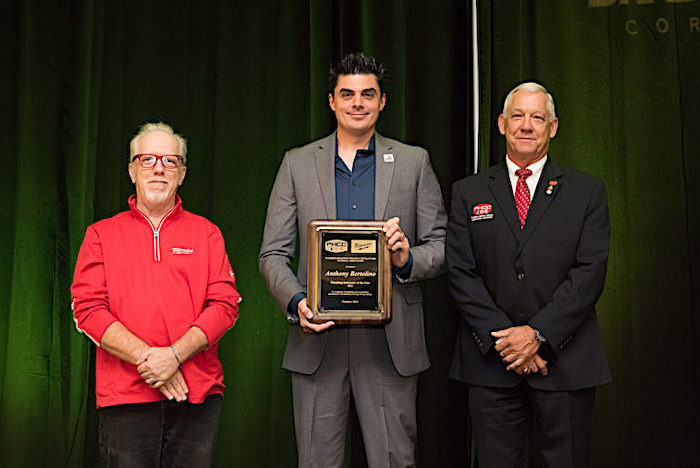
“The instructors in the p-h-c field play a crucial role in developing tomorrow’s workers,” said 2020-2021 PHCC President Hunter Botto during the award presentation. “We are fortunate to have high-caliber men and women who devote their time – both on and off the clock – to prepare students for rewarding careers in our industry.”
Bertolino is “an exceptional teacher and role model for his students,” added Botto. In addition to running Bertolino Plumbing & Heating in Virginia Beach, Virginia, with this brother, he teaches all four years of plumbing apprenticeship at Norfolk Technical Center. He has dramatically improved both the retention rate for each class and the number of students, and his program is one of the largest in Virginia.
Ironically, Bertolino did not originally plan to become a plumber but rather study business in college and become a floor trader in New York City. After his father, a licensed plumbing contractor, explained the expenses involved with that plan, however, Bertolino considered plumbing. He enrolled in an apprenticeship program, earned his journeyman’s license, and – less than two years later – received his masters’ licenses.
This is one of the first stories Bertolino shares with his students. “I tell them that I have no student debt; I own my own business; and I really enjoy what I do,” he said. “I also tell them how much I have learned and that this is the career I chose.”
As an instructor, Bertolino’s effectiveness is more than charisma and straight talk, however. He incorporates the Montessori method of education that is based on self-directed activity, hands-on learning, and collaborative play. He engages students by sharing examples of his own on-the-job challenges and encourages them to discuss their work experiences to help advance the entire class.
“Tony’s students know that he expects them to apply their classroom knowledge to the day-to-day work and that licensure is the mark of professionalism,” Botto said during the award presentation. “He reminds them of the importance of plumbing to the health and safety of the nation.”
Bertolino’s connection with his students doesn’t end when their apprenticeships are completed; he stays in touch with many of them for years and keeps a collection of stories about the good things they have done in the trade. PHCC and Milwaukee Tool proudly recognized Bertolino’s ongoing commitment to these young professionals with this Plumbing Instructor of the Year award.
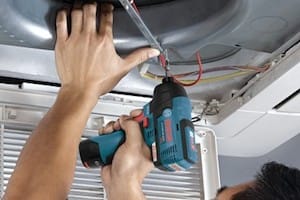
Before closing the final contract, the buyer does a USA house inspection to check for any flaws or critical concerns with the property. The professional home inspector’s written report includes a wide range of topics, including roof conditions, structural strength, electrical and plumbing testing, and sewer scope. It gives the buyer some peace of mind Read more
Before closing the final contract, the buyer does a USA house inspection to check for any flaws or critical concerns with the property. The professional home inspector’s written report includes a wide range of topics, including roof conditions, structural strength, electrical and plumbing testing, and sewer scope. It gives the buyer some peace of mind, allowing them to haggle over the price, make repairs, or cancel the transaction altogether if it isn’t right for them.
It may be tough to get a house inspector in the United States that can provide you with entirely neutral information on the property. With these considerations in mind, you will be able to choose a fantastic USA house inspector on whom you can rely to make the final decision.
Don’t take a real estate agent’s recommendation at face value
A USA house inspector who has been suggested by your realtor may feel forced to provide a light examination. Because the agent’s goal is to conclude the sale as quickly as feasible. This is why real estate inspections are done. This way, home buyers have a knowledgeable professional on their side, looking out for their interests.
Verify that the candidates are competent and reliable
A home inspector can be located by contacting professional organizations like the American Society of Home Inspectors (ASHI), the International Association of Certified Home Inspectors (InterNACHI), or the National Academy of Building Inspection Engineers, certified professional engineers and architects who perform home inspections in the United States.
Visit the group’s website to learn more about the expertise and credentials of its member inspectors, as well as the services they provide. Do a web search for the firm with which the inspectors are affiliated, as well as reviews from former clients. Also, respect his qualifications, but be aware of their limitations.
Take your education and experience into account
Look for someone who has spent years analyzing properties in the same area, in addition to professional credentials and accreditations. He’s more likely to have encountered a variety of different types of homes and issues.
Compare US Home Inspection Reports
Request a sample copy of the instructor’s past USA home inspection reports. Compare the reports to those of other home inspectors, based on the tests, screening, time spent, and level of information in their observations.
Find out what you receive for your money
The cost of an inspection varies based on the extent of the examination and the inspection equipment employed. Inquire about any hidden fees and complimentary services.
What Questions Should You Ask a Home Inspector?
The price of a house inspector and the degree of accuracy of a USA home inspection are determined by the questions asked of them. The following are some questions to ask a home inspector to assure the house’s safety or recompense (if necessary) from the seller in price:
Do you (the home inspector) have any credentials?
Inquire about the home inspector’s professional organization, qualifications, certifications, insurance, and experience in the USA house inspection sector for the location in question.
What is the roof’s condition?
Inquire about the shingles’ condition when your home inspector is inspecting the roof. Are there any asphalt particles accumulating in the gutters? Are there any obvious indications of wear and tear? If this is the case, the roof may need to be replaced.
Is the house adequately insulated?
Your heating and cooling bills will be affected by how effectively your property is insulated. To keep heat from fleeing the house, the attic should be effectively insulated. Is there any type of insulation used? If asbestos is present in vermiculite insulation, it can pose a major health danger if disturbed. Is there adequate ventilation in the attic? How well insulated is the basement? Appropriate insulation materials used or not?
How is the electrical situation?
Because electrical fires are prevalent, you should have your home inspector evaluate the electrical system. Is it code-compliant? Is there anything that’s worn out? Was the electrical work done by a certified electrician if there were any upgrades? Are GFCI outlets present in areas where water is present, such as the kitchen, baths, garage, and outdoor areas? Are there any cables that are exposed or damaged?
How is the plumbing situation?
Drains, water heaters, pipelines, water pressure, and temperature will all be examined by a home inspector. How does each faucet’s water flow? Is everything draining correctly? Are the tubs suitably secured? Are the tubs suitably secured? Any water stains on the flooring or ceiling should be noted by your home inspector since they might signal a plumbing issue. Inquire about any galvanized steel pipe in the house, since it can corrode and decrease water pressure, or even burst. Is there any lead pipe in the house?
Is the structure of the house sound?
The foundation of the house will be examined by a home inspector. Inquire about any fractures discovered. If foundation cracks are detected, determine what type they are – step, vertical, horizontal, along walls, or in the basement floor.
What is the status of the HVAC system?
The home’s heating, ventilation, and air-conditioning system (HVAC) will be examined during the inspection to ensure that it is in working order. Inquire about the age of the air conditioner and how long it should last. Has the furnace been serviced and maintained properly?
What is the state of the outside drainage?
Are there any puddles that have formed? This might be a sign of a water problem. Are there any downspouts missing? Are all the downspouts directed away from the base of the house? Improper drainage and grading can result in expensive foundation problems.
Do you see any mice or other critters?
If an infestation is suspected, inquire. Mice and other rodents can wreak havoc on homes and businesses.
Conclusion:
Choosing a home inspector is part of the home buying process (which involves a complete inspection of the property). The home inspector’s findings can impact your decision. Therefore, it’s important to choose the right professional for the job. The simple process of interviewing a candidate for a local home inspector job entails asking about his value for services, credentials, certification, experience, and report comparison. And the questions that you ask about the property condition will be a deciding factor for his fees and expenses.
Second Acquisition for Bonney in the Skilled Trades Industry Sacramento, Calif. — Bonney Plumbing, Electrical, Heating and Air (Bonney), a home services company headquartered in Rancho Cordova, CA, announced it has acquired Sacramento-based Boyd Plumbing, Inc. Boyd has been a trusted provider of plumbing services to the Sacramento area and its neighboring communities since 2006 Read more
Second Acquisition for Bonney in the Skilled Trades Industry
Sacramento, Calif. — Bonney Plumbing, Electrical, Heating and Air (Bonney), a home services company headquartered in Rancho Cordova, CA, announced it has acquired Sacramento-based Boyd Plumbing, Inc. Boyd has been a trusted provider of plumbing services to the Sacramento area and its neighboring communities since 2006.
Under the partnership, Boyd Plumbing will fold in with Bonney, expanding the plumbing team to service nine counties including Sacramento, Sutter, Placer, El Dorado, Amador, Calaveras, San Joaquin, Solano and Yolo. Customers will continue to experience great work by the region’s most trusted professionals in the industry with a minor brand uplift to fit in with the look of Bonney’s signature technicians.
“Boyd Plumbing is at the top of their game and by merging, we have assembled the best plumbing team in the Sacramento region and will continue to provide superior customer service to the communities we serve, “Jeremy Macdonald, Chief Executive Officer of Bonney. “Boyd has an excellent reputation and this purchase aligns with Bonney’s long-term goal of building the best home services company in Northern California.”
“As the need for talented technicians is on the rise, a partnership with Bonney is ideal to continue to serve this community and focus on employee growth and success.” said Michael Boyd, CEO of Boyd Plumbing. “Our companies are not only a great cultural fit, but also have both long delivered excellent results to our clients here in the Sacramento area.”
Bonney plans to invest in several founder-owned companies over the next few years to build a regional leader in home services. To that end, in September Bonney acquired Concord-based Big Air Heating & Air Conditioning, expanding their territory into the Bay Area.

If you’re looking to grow your plumbing business you’ll need a way to stand out from the rest. With the help of these focus areas you’ll increase your visibility, both online and within your local community. Directory listings Local plumbing businesses must ensure that they are listed in the most popular online business directories. Adding Read more
If you’re looking to grow your plumbing business you’ll need a way to stand out from the rest. With the help of these focus areas you’ll increase your visibility, both online and within your local community.
Directory listings
Local plumbing businesses must ensure that they are listed in the most popular online business directories. Adding your company to online directories is a great way to boost your online visibility and establish yourself as a credible company. A few of the main directories include Google, Yelp, LinkedIn, Bing and Yahoo.
Attractive website & blog
To market your plumbing business you should ensure that you have a professional website, and regularly updated blog. You’ll need to create a user friendly site that’s SEO optimized. Ensure that you also optimize your site for speed, you might also consider using a chatbot to improve customer service.
When it comes to creating your blog you’ll need to provide plenty of educational posts that respond to online search intent. Check out your competitors’ content and make sure you’re offering something unique.
To help you optimize your website and your blog there are lots of free SEO tools you can use. Check out tools like Keyword Hero, Google Analytics or Moz Cast.
Testimonials
According to Boast, ‘92% of customers read online reviews before buying.’ Research also indicates that, ‘72% of consumers say positive testimonials and reviews increase their trust in a business.’
To support your marketing and boost your credibility you’ll want to collect plenty of positive testimonials and reviews. You might offer your existing customers a discount in exchange for providing a testimonial?
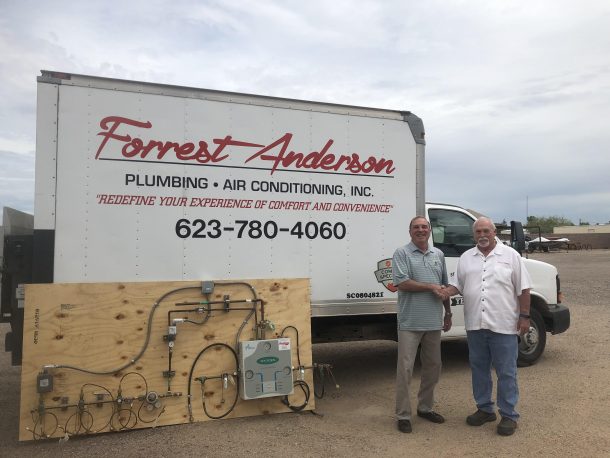
Maintain your reputation
Word of mouth marketing still exists, if your customers have a bad experience they’ll tell their friends, (plus they’ll tell the internet). This sort of thing can quickly damage your reputation, and so you’ll need to stay one step ahead. So how do you maintain your reputation? The most important thing is to provide an excellent product and service. Use the highest quality tools from your ibc totes to your copper tube cutter and your air testing gauge kit. Working with quality tools and resources will help you to maintain the best service.
When you’re thinking about your reputation it’s also worth remembering that customers prefer eco-friendly companies. Incorporating sustainability into your brand will help you to grow.
Social media
Social media can help you to support your marketing campaigns in a number of ways. You can run paid ads on social media, adjusting your preferences to target your audience specifically. Social media is a great way to boost your visibility, and establish a name for yourself in the industry. You can engage your prospects with useful content, from how-to videos to social media competitions.
With the right marketing plan you’ll soon grow your small business, widening your reach and gaining more loyal customers. Creating a successful marketing strategy has many different elements. Most importantly, you’ll need to appeal to the values of your target audience.
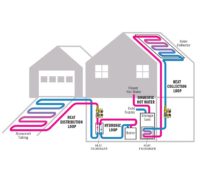
All plumbing systems should be designed with future servicing in mind. In a typical closed-loop system, maintenance usually involves a four-step process: draining the existing fluid, flushing with a descaling/cleaning solution, rinsing out the solution, and refilling with new fluid. During installation, contractors will designate a purging station and a filling station in anticipation of Read more
All plumbing systems should be designed with future servicing in mind. In a typical closed-loop system, maintenance usually involves a four-step process: draining the existing fluid, flushing with a descaling/cleaning solution, rinsing out the solution, and refilling with new fluid. During installation, contractors will designate a purging station and a filling station in anticipation of such a process. Each station would consist of a hose drain to purge or fill, and a ball valve to isolate it from the rest of the system.
To consolidate components and to avoid draining the system completely, contractors began fabricating combined purging and filling stations. A pair of assemblies each consisting of a boiler drain, tee, and close nipple would be installed, with a central ball valve placed in between the two stations for isolation. By opening the drain valves and closing the ball valve in the middle, the system loop would open. Then, when new fluid was introduced via the filling station, the flow would displace old fluid through the system and out the decoupled purging station on the other side of the ball valve. Through some clever fabrication, what was once a four step process was now just one step.
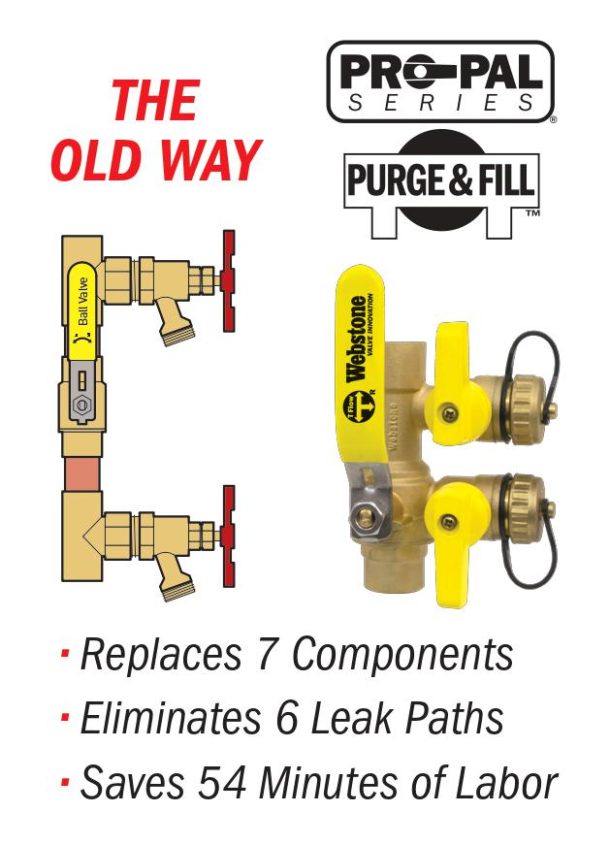
Though this assembly does its job to simplify the process, it’s not without its drawbacks. Field fabrications, though functional, are an inelegant solution. Contractors need to take into account the bulkiness of such an assembly when designing the system layout, which can be a challenge when space is limited. Aside from the lengthy footprint, this assembly also introduces three valves and four fittings into the system, increasing labor and leak paths with each component used. These disadvantages have long been accepted by contractors as a necessary evil in designing a system that expedites the purging and filling process.
Enter the Webstone Purge & Fill. An all-in-one forged brass valve alternative, it eliminates 6 leak paths and saves the installer nearly one hour of labor. Its patented design not only streamlines installation, but it also employs the same principals explained above to facilitate future servicing of the closed loop. The three-way ball quickly isolates the flow between the two hose connections, allowing new fluid to enter the system through the top fill drain. The fluid will then flow through the system, forcing out the old fluid until it completes the circuit through the bottom purge drain. By displacing the old fluid with the new, contractors can avoid the timely process of draining and filling the system between each step of the maintenance process.
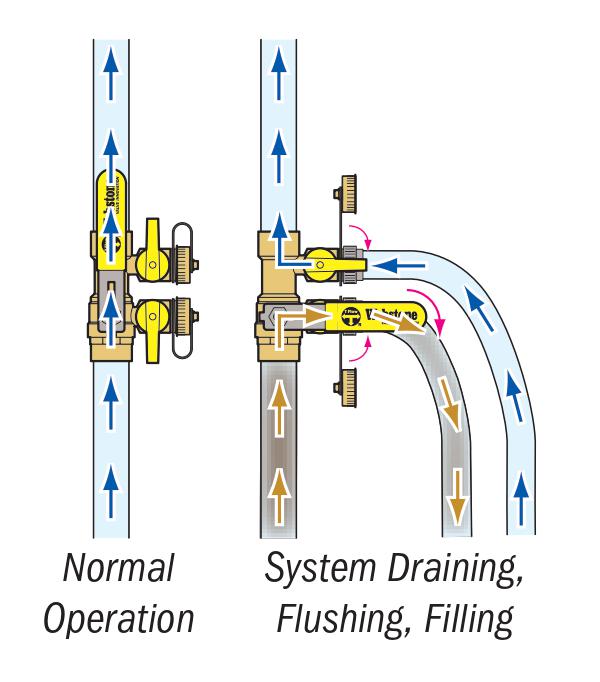
The Purge & Fill was designed for use anywhere that requires routine maintenance of the fluids within a closed-loop. In applications where piping systems are exposed to the elements, a heat transfer fluid like propylene glycol is added to the water to prevent freezing. This fluid mixture will run through the loop, utilizing a heat exchanger to prevent direct contact with any potable water distribution. Over time, this fluid must be replaced, and the piping system should be cleaned or descaled if needed. This is an ideal application for the Purge & Fill because it allows the loop to maintain normal operating conditions as it is simultaneously purged and filled during servicing.
In solar heating systems, the valve can be placed within the heat collection loop. Here the fluid mixture will circulate through the solar collectors, gathering heat that is then distributed to the potable water through the heat exchanger.
In snowmelt applications, the valve can be placed within the heat distribution loop, where the fluid mixture will pass through the heat exchanger and distribute heat through a series of tubing under an outdoor surface.
The fluid mixture’s levels within either loop in must be checked and replaced periodically to ensure proper operation and maintenance of the system. With the Purge & Fill installed in each loop, the fluid can easily be inspected, flushed, and refilled as needed.
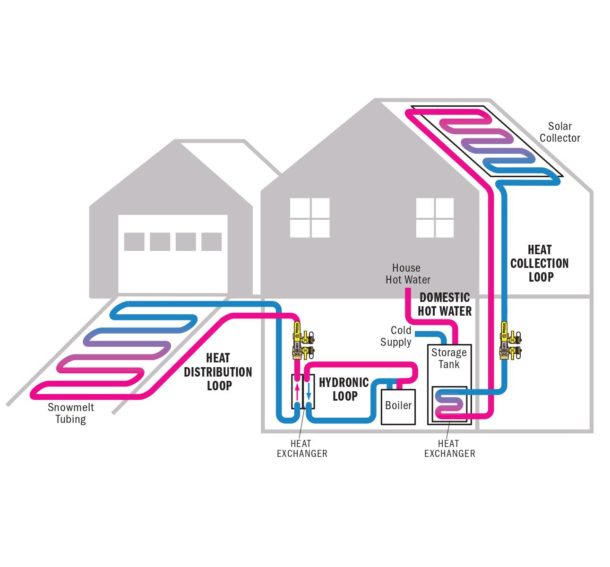
Available with threaded or sweat connections and in sizes ¾” through 1 ½”, the Purge & Fill is suitable for any closed-loop system. Its single body forged brass construction features heavy duty brass and hi-flow hose drains. The reversible handle is accompanied by an adjustable packing gland and blow-out proof stem that offer versatility and dependability throughout the life of the product.
Inspired by the field fabrication solutions that came before it, the Purge & Fill is part of Webstone’s Pro-Pal series; a line of step-saving valves designed with the professional in mind. The result is a cleaner looking installation, with fewer components and more efficient system operation. Like all Webstone products, the Purge & Fill is guaranteed for life.
